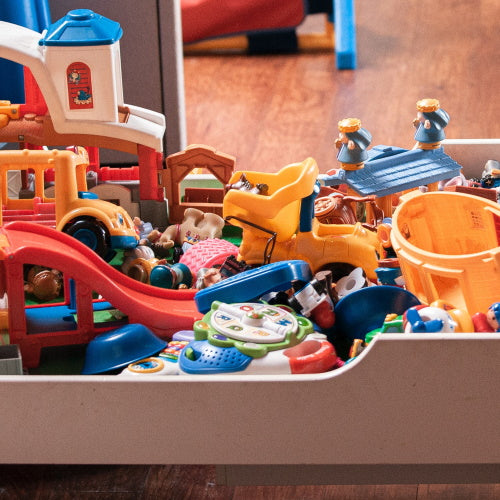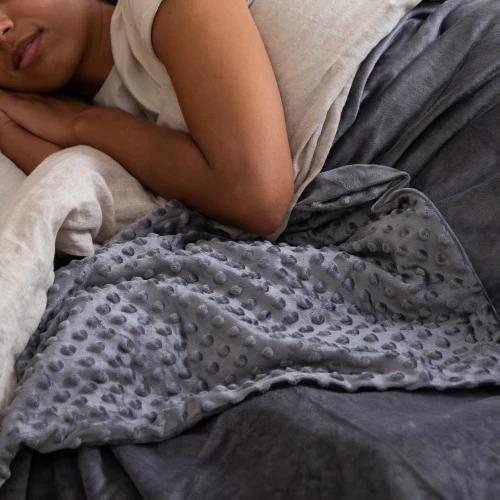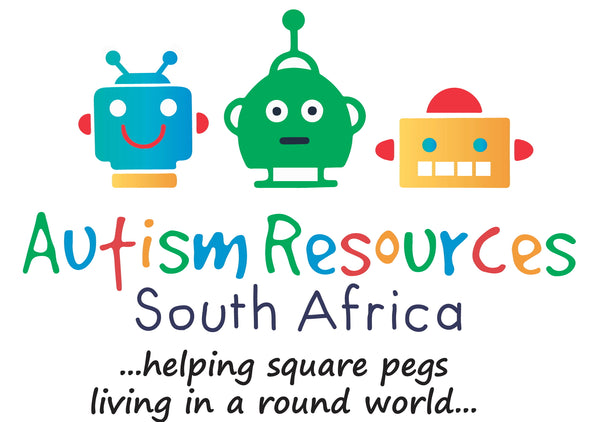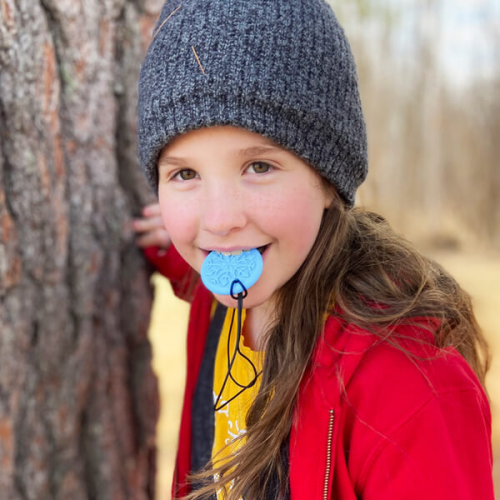What's New...
-
Silicone Chewable Pencil Topper (Tube)
Regular price R 59.00 ZARRegular priceUnit price / perR 79.00 ZARSale price R 59.00 ZARSale -
Lapel Pin (Autistic and Anxious)
Regular price R 59.00 ZARRegular priceUnit price / per -
Zigzag Liquid Timer with spinners
Regular price R 99.00 ZARRegular priceUnit price / per -
Wooden Rainmaker
Regular price R 149.00 ZARRegular priceUnit price / per
Shop For...
View all-

Sensory Toys
Sensory Toys can be very valuable to manage anxiety and fidgeting. They...
-

Weighted Products
After trying out all the different weighted blankets available, we decided to create...

What is Autism Spectrum Disorder?
Autism spectrum disorder (ASD) and autism are both general terms for a group of complex disorders of brain development. These disorders are characterized, in varying degrees, by difficulties in social interaction,verbal and nonverbal communication as well as repetitive behaviours and...

Autism Parenting Magazine
Autism Parenting Magazine is the leading digital magazine for parents of autistic children as well as professionals seeking to work with children on the spectrum.
Worth a Read
View all-

Being non-verbal: In their own words
As both my kids are verbal, I don’t have much interaction with non-verbal autistic people. Malaika does sometimes become non-verbal when her anxiety is through the roof, but I’ve always...
Being non-verbal: In their own words
As both my kids are verbal, I don’t have much interaction with non-verbal autistic people. Malaika does sometimes become non-verbal when her anxiety is through the roof, but I’ve always...
-

Finding your tribe
We held the first adult support group session this week and what struck me was the diversity of the people attending. And the fact that, irrespective of age, gender or...
Finding your tribe
We held the first adult support group session this week and what struck me was the diversity of the people attending. And the fact that, irrespective of age, gender or...
-

How to Help Your Autistic Child Transition to A...
From Autism Parenting Magazine Issue 118 – Reframing Education in the New Normal “What do you want to be when you grow up?” This question is first posed to youngsters before...
How to Help Your Autistic Child Transition to A...
From Autism Parenting Magazine Issue 118 – Reframing Education in the New Normal “What do you want to be when you grow up?” This question is first posed to youngsters before...
Need some help?
How to Choose the Right Chewable
Now that we have such a wide range of chewables, we often get questions about them. Chewable necklaces and pencil toppers come in many shapes and levels of toughness. How do you know which one is right for you? And how long are they supposed to last?
Well, the softer chews are better for those who chew lightly on objects, while the tougher (and harder) chews are designed for those who prefer to bite down hard on objects. Although we have done our best to source sturdy chewables, it is important to note that no chew tool is indestructible. Wear and tear will be expected given the nature of the intended use. How long a chewable will last will depend on how a it is used, how often, and the intensity of its use by your child. Other variables, such as jaw strength, stress/anxiety levels may also influence the longevity of a chewable tool.
For some children, a chew tool will last a long time. For others with heavy or aggressive oral needs, they may go through it very quickly and sometimes it may only last a few hours. What is important, is that a chewable will never last forever and that you have to choose the right one, which might sometimes mean experimenting with the different options.
We have now changed our range of chewables to categorize them in three levels:
- Standard - the softest, “chewiest” option that you can “sink your teeth” into the most and also the option that will work for the majority of individuals. Recommended for those who do not chew right through anything that they chew on.
- Tough - This option is firmer, but still fairly chewy. Recommended for individuals who sometimes chew through things and/or have chewed through the standard level before.
- Extra Tough - This is the most firm option. These are pretty tough and rigid, but still chewable. Although no chew tool is indestructible, this is usually the longest lasting level in any given shape for heavy chewers.
While we stock several options, only the extra tough chewables available on our website are part of the ARK Therapeutic range of chewables. Even though they are more expensive, their quality makes them worth it. Please note that all ARK chewables on our website are indicated by the ARK prefix. Other chewables on our website are not ARK chewables.

We recommend starting with the standard/softest level, unless your child causes damage to things that they currently chew on, in which case it's usually best to go up to the tougher level, if you want the chewable to last a bit longer.
If someone does chew through things - it's possible they may eventually need the Extra Tough level, but we usually don't recommend getting that one from the start (unless they've already chewed through other chews or very hard items like legos, hard plastic toys, wooden items, etc.). Otherwise, Extra Tough may be too hard for their liking.
All chewelry will tear, break and dent in time. Our customers tell us that their children all have a favorite and a chewable which is tougher to chew through for one person, may not be for the next. Some even choose to have more than one chewable, a softer one for when they are calm and a second tougher one for times of great anxiety and stress where chewing increases.
Once damaged, the chewables MUST be discarded and replaced. The breakaway clasp and cord are also NOT for chewing and are purely to hold the necklace in place. If you think that you or your child will chew the clasp then this product may not be suitable and you would be better with a bracelet or a pencil topper.
When in doubt, we always recommend leaning towards something softer rather than harder. We've never had anyone ever say they didn't like a chew because it was too soft (they may eventually chew through it and need something tougher, but they'll still use the chewier ones). But we do sometimes hear that someone didn't like their chew because it was too hard.
Important to Know:
- Some kids may want a variety of chew tool shapes and toughness levels. Sensory preferences can vary from day to day or even hour to hour. At times they may want something very chewy (the standard level). At other times they may want something more rigid that provides a lot of resistance.
- Keep in mind that everyone has different preferences. We’ve had parents tell us that the Extra Tough is too tough for their child, but when their child actually tries it, he/she loves it. Extra Tough may feel too tough for one person’s jaw, but for others it is just right. We all have different levels of sensory needs.
- Sensory preferences always differ - Which means that someone may prefer to chew on the Standard level, but needs the Extra Tough in terms of intensity. In this case, it’s best to stick with the softer chews that they prefer. They may chew through them more quickly, but at least they will use them instead of chewing on other potentially harmful items.
- When it comes to oral sensory needs, chew tools are usually just one piece of the puzzle. A very important piece, but only one piece. Other sensory / calming strategies are usually also needed and very helpful.
Guide for Weighted Blankets
Weighted blankets are made to fit the BODY and not the BED. The blanket should lay on top of the bed without hanging over the sides. Because the blanket is weighted, if it hangs over the sides, you will spend the entire night fighting to keep it from sliding into the floor. You can use a regular blanket for “looks” during the day, keeping your weighted blanket folded at the bottom of the bed. Or you can bring out your weighted blanket only at bedtime.
The rules of thumb with weighted blankets is that they should weigh about 10% of the user’s body weight.
Buying for your toddler
Size Small approx. (120 cm x 75 cm)
DO NOT BUY A WEIGHTED BLANKET FOR ANY CHILD UNDER 1 YEAR OLD
The first thing you want to know about buying for your toddler is, you want the blanket that would best fit them and not the bed. Our Small size is approximately 120 cm x 75 cm and this is what we would suggest for a toddler. It fits a toddler bed mattress without hanging over. It can fit children between the ages of 1-6 years old. Please use our weight guidelines when deciding on the weight to get for your young child and make sure they can remove the blanket on their own without assistance.
Buying for your children
Size Medium. (150 cm x 90 cm)
The first thing we would like to address is the size of blanket appropriate for children of this age. 6 years - 12 years. A lot of people believe that they need to buy a blanket to fit their child’s bed, an understandable option, but that is not the case with a weighted blanket.
Our sizes are not normal blanket sizes. Our blankets are made to fit the person and not the bed, the reason for this is that it has been shown to work better if you get the blanket made to fit your body. Also our blankets are made so that they will NOT hang over the edges of your bed AT ALL. If they hang over, the weight will slowly pull the blanket off of your bed and instead of getting the rest that you need you will spend your night pulling that blanket up on the bed over and over and over.
Use our weight guidelines when picking your blanket. It's okay to round their weight up to the nearest 5 kg. (37 kg = 40 kg)
Example:
Example 1: Your child is 22 kg. The small 2 kg is for a 20 kg user, while the medium 3 kg is for a 30 kg user. In this case, the small weighted blanket is the best option.
Example 2: Your child is 37 kg. The medium 3 kg is for a 30 kg user, while the large 4.5 kg is for a 45 kg user. You may not want to go with the Medium 3 kg since they are already over 30 kg. In this case, perhaps a custom-made blanket is best.
Important: There is a big difference of pressure in these 2 blankets, so always listen to how your child feels about the weight of the blanket. If at any point they say it is uncomfortable take it off. If you stay within our guidelines this should not be a problem.
Buying for Teenagers and Adults
Large size (180 cm x 105 cm)
This is where it gets tricky. :-) Adults dealing with different things such as sensory disorders, ADHD, anxiety, insomnia, restless legs, and so on are comfortable with different amounts of weight. The weight guidelines were originally for people with sensory disorders and that is the reason why many people who just have anxiety, insomnia, etc. do not need that extra weight. The Extra Large blanket can easily be too heavy in that case.
- Buying as an Adult/Teenager with Autism
Many people with autism crave that extra sensory input, If you stay in the weight guidelines (10% of body weight), the blanket should be comfortable.
- Buying as an Adult/Teenager with Anxiety
In this case it is probably better to start with a lighter blanket and only choose a heavier blanket if you have experienced them before and know that you will be comfortable with the weight.
Buying an Extra Large weighted blanket
Approx. (195 cm x 135 cm )
It is important to remember that the size of our “Extra Large” size will not be like your regular comforter. You can always measure across your bed to see how it would lay. This blanket should only cover the top of the bed and never hang over the edges. That means that they are typically for a Queen or King sized bed. This blanket is so large and so heavy that most people find it too much to manage.
Wilbarger Brushing Protocol
The Wilbarger Protocol is a deep pressure technique used with children who have sensory defensiveness. The purpose is to alter and normalise sensory processing which will assist with the child’s ability to function within the school or home setting and impact on the child’s social and work behaviours.
The first step of the Wilbarger Protocol involves providing deep pressure to the skin on the arms, back, and legs using a special surgical brush. Many people mistakenly call this technique "brushing" because a surgical brush is used. The term "brushing" does not adequately reflect the amount of pressure that is exerted against the skin with the movement of the brush. A more appropriate analogy would be that it is like giving someone a deep massage using a surgical brush. The use of the brush in a slow and methodical manner provides consistent deep-pressure input to a wide area of the skin surface on the body. The face and stomach are never brushed.
Following the "massage" stage, the child receives gentle compressions to the shoulders, elbows, wrists/fingers, hips, knees/ankles, and sternum. These compressions provide substantial proprioceptive input.
The complete routine should only take about three minutes. Some children immediately enjoy this input, and others resist the first few sessions. You may distract the child by singing or offering a mouth or fidget toy.
When Using the Brush:
- Use the brush with a firm and even pressure.
- Do not sweep the brush.
- Hold the brush horizontally.
- Move slowly.
- Think of steam cleaning and press hard enough to move the skin.
Notes:
- Brush over clothes and/or skin but do not move from skin to clothes.
- Each child should have their own brush for hygiene reasons.
- Always maintain contact with the child with your other hand during the brushing procedure, especially when moving to other areas of the body. Use hand palm versus finger tips.
- The child should be in a seated position during brushing if possible and it should be done in a calm, quiet area.
The Procedure:
- Brush arms covering as much surface area as possible, 5 strokes in a up/down motion, covering the area 2X.
- Brush Palms 5X
- Brush back 5X up and down and 5X side to side.
- Brush the other arm.
- Brush legs below the knee covering as much surface as possible, % strokes in a up/down motion covering 2X.
- Brush feet holding one hand on top and the other using the brush in a in a sweeping movement. Move top hand in sync with the bottom one 5X.
Some children really like the administration of this protocol and will seek out the brush and bring it to their parents, teachers, or caregivers. Other children tolerate it with little reaction, and occasionally a child is resistive. If the child continues to resist, and you see negative changes, you must reconsider the use of the technique, but this has rarely occurred in practice.
The Wilbarger Technique and Science
The Wilbarger Protocol (Wilbarger, 1991) is a specific, professionally guided treatment regime designed to reduce sensory defensiveness, developed by Patricia Wilbarger. The Wilbarger Protocol has its origins in sensory integration theory, and it has evolved through clinical use. It involves deep-touch pressure throughout the day.
There currently is a lack of documented research to substantiate this technique. However, the protocol has been used by many occupational therapists who have noted positive results with a variety of populations. Many parents of children with autism have reported that their children have responded positively to this technique, including reduction in sensory defensiveness, as well as improved behavior and interaction. The Wilbarger Protocol represents one of those difficulties in clinical practice where positive results are observed in treatment regimens that have not yet been fully validated by scientific research.
Stay Up To Date With The Latest
Subscribe to our mailing list to stay up to date with the newest products, blogs and more.















